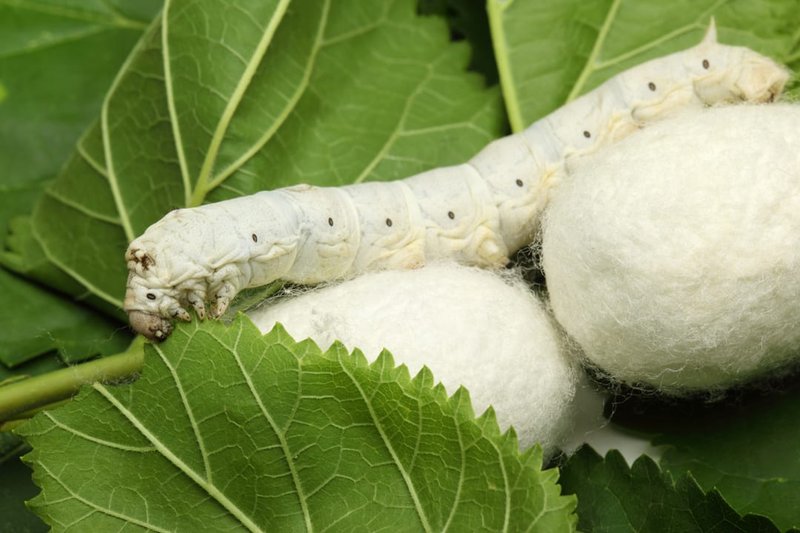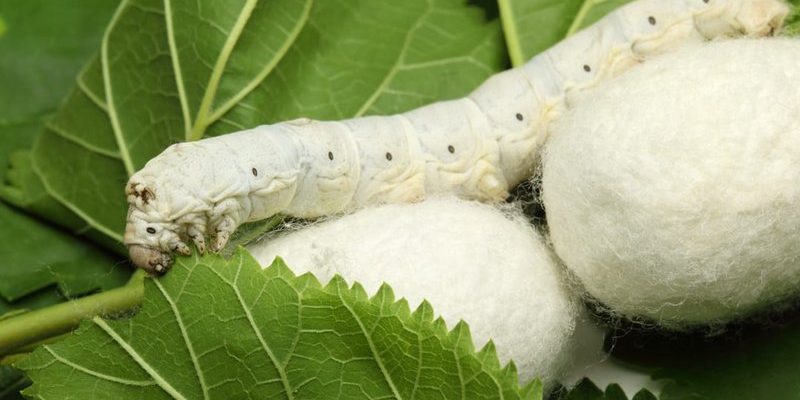
Imagine you’re a caretaker, making sure your silkworms have everything they need, much like a chef preparing a perfect meal. In this case, the ingredients are cleanliness and care. We’ll explore how maintaining a clean environment not only supports silkworm health but also boosts their silk production. If you’re venturing into sericulture, or silk farming, understanding the importance of cleanliness is crucial.
Understanding Silkworm Habitats
Silkworms have specific environmental needs that make them feel safe and comfortable. They thrive in controlled settings, typically between 23°C to 28°C (73°F to 82°F) with 60-70% humidity. This temperature range is essential because it affects their growth and overall health. Picture a cozy room where everything feels just right—too cold or too hot, and they become stressed.
When you set up their habitat, think about adequate ventilation. Good air circulation helps prevent the buildup of harmful bacteria and diseases. Use cloth or mesh screens on windows to ensure airflow while keeping pests out. Remember, silkworms are like us; they don’t like to feel stifled.
Additionally, their habitat should be free from drafts or extreme temperature changes. Sudden shifts can be detrimental, making it hard for them to thrive. Investing time in creating the perfect environment pays off in a healthier, happier silkworm population.
The Importance of Cleanliness
Cleanliness is vital in maintaining silkworm health. A dirty environment can lead to several problems, including disease outbreaks. Imagine living in a messy room—just like us, silkworms can get stressed out in unclean surroundings. They are susceptible to pests like mites and fungi, which thrive in unsanitary conditions.
Here’s the thing: cleaning isn’t just about sweeping the floor. It involves regularly changing bedding materials, like mulberry leaves, and removing any droppings. These can quickly build up and attract unwanted pests. Make it a routine, perhaps daily or weekly, to check for cleanliness.
Moreover, maintaining cleanliness improves silk quality and yield. Healthy silkworms produce better silk. So, the cleaner their environment, the higher the quality of silk you can expect. It’s a win-win situation for both you and your silkworms!
Daily Cleaning Practices
You might be wondering what daily cleaning looks like when caring for silkworms. Starting with the feeding area, ensure to remove any uneaten mulberry leaves. They can rot quickly and create a foul smell, which attracts bacteria.
Here’s a simple cleaning routine you can follow:
- Check the bedding: Replace it daily to prevent mold and odors.
- Inspect for pests: Look for any signs of mites or other bugs.
- Wipe surfaces: Use a damp cloth or sponge to clean trays and walls.
- Ensure good airflow: Open windows or vents to circulate fresh air.
Consistency is key. Create a checklist if it helps, so you won’t forget any steps. It won’t take long, and your silkworms will thank you for it!
Weekly Deep-Cleaning Steps
In addition to daily cleaning, a deeper clean is crucial at least once a week. This includes a thorough scrub-down of all surfaces. Start by removing everything from the silkworm enclosure. Then, use a safe disinfectant—something non-toxic that won’t harm your silkworms once it’s dry.
Here are the steps for a weekly deep clean:
- Remove all items: Take out trays, feeders, and any accessories.
- Clean all surfaces: Use hot water combined with a gentle cleaning solution.
- Dry everything thoroughly: This helps avoid any mildew or mold growth.
- Replace bedding: Use new, clean bedding to create a fresh environment.
This process ensures that the space is not only clean but also free from potential contaminants. Remember, a clean space leads to healthier silkworms—and that’s the goal!
Monitoring Humidity and Temperature
Maintaining the right humidity and temperature is just as important as keeping things clean. You might be surprised to learn that humidity directly affects silkworm health. Too much moisture can lead to fungal growth, while too little can dry them out. Keeping track of humidity levels ensures your silkworms are comfortable and thriving.
Use a hygrometer to measure humidity, aiming for around 60-70%. If it’s too low, consider using a humidifier or placing shallow trays of water around for evaporation. Conversely, if the humidity is too high, ensure proper ventilation and remove any damp bedding.
Temperature is equally essential. As mentioned earlier, aim for that sweet spot between 23°C to 28°C. Use a thermometer to monitor this, adjusting heating or cooling as necessary. A stable environment helps your silkworms feel safe and promotes healthy growth. Think of it as creating a cozy home where they can flourish!
Identifying and Addressing Health Issues
Even with the best cleaning practices and environment control, silkworms can still face health challenges. Awareness is key here. Regularly observe your silkworms for any signs of distress or illness. Common symptoms include discolored or shriveled bodies, lack of movement, or refusal to eat.
If you notice any of these issues, it’s time to act. First, isolate any affected silkworms to prevent spreading illness. Next, double-check that their environment is clean and within the appropriate temperature and humidity ranges. If problems persist, consider consulting a sericulture expert for advice on treatment options.
Staying proactive about health matters can prevent significant losses down the line. Just like we’d seek a doctor’s help when feeling unwell, your silkworms appreciate a careful caretaker who’s on top of their health.
Maintaining clean environments for silkworm health might seem like a lot of work, but the rewards are plentiful. Healthy silkworms lead to quality silk production, making your efforts worthwhile. By setting a routine for daily and weekly cleaning, monitoring humidity and temperature, and keeping an eye on their health, you’re creating a nurturing space where silkworms can thrive.
In this journey, remember that you’re not just raising silkworms; you’re nurturing a tiny ecosystem. Each step you take towards a cleaner environment enhances their well-being and boosts your silk production. So, roll up your sleeves, embrace the process, and enjoy watching your silkworms flourish in their clean, cozy habitat.

